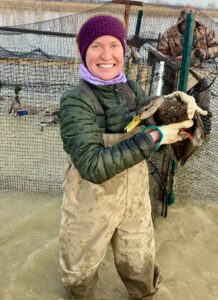Each year, The Garden Club of America provides $5,000 Coastal Wetlands Awards to one or more deserving students for field work and research in wetlands conservation. Applicants must be enrolled in a graduate program in the US and must propose a field-based study in coastal wetlands in the US (defined as tidal or non-tidal wetlands within the coastal states, including the Great Lake states).
Applications are reviewed by a selection committee of practicing wetland scientists at Virginia Institute of Marine Science’s Center for Coastal Resources Management (CCRM). The Virginia Institute of Marine Science (VIMS) has a three-part mission to conduct research in coastal ocean and estuarine science, educate students and citizens, and provide advisory service to policy makers, industry, and the public. VIMS provides these services to Virginia, the nation, and the world. Chartered in 1940, VIMS is currently among the largest marine research and education centers in the United States. GCA’s Scholarship Committee selects the final award winners from the CCRM’s nominees.
One recent recipient of this award is Taylor Courtney Michael, GCA’s 2022 Coastal Wetlands Scholar. Michael, a PhD candidate in Ecology and Evolutionary Biology at Kent State University, examined how Great Lakes coastal wetlands buffer waterfowl-derived nutrients (nitrogen and phosphorus). She looked at how nutrient inputs from waterfowl (including mallards, Canada geese, and double-crested cormorants) shape the community composition of algae in surface water. From this, Michael explains that one can better understand how nutrient ratios in guano shape dominant algae groups. Going forward, she reports, “I will be measuring waterfowl densities at Old Woman Creek to come up with estimates of how much nitrogen and phosphorus is contributed by waterfowl and how this compares to watershed nutrient loading.”
Michael will soon be starting data analysis for her experiments in preparation for her dissertation.

